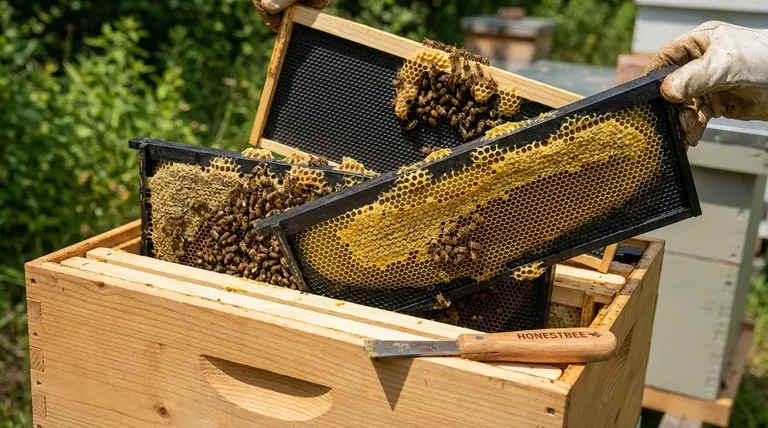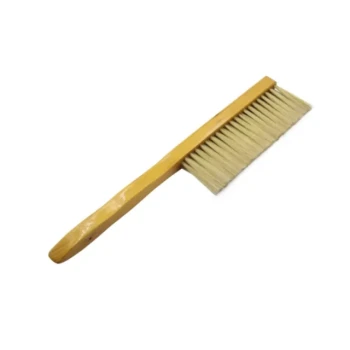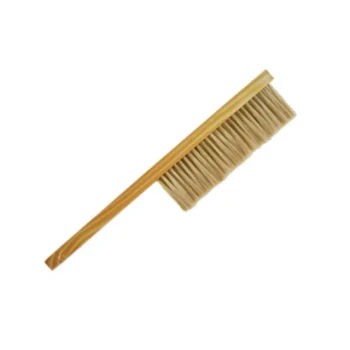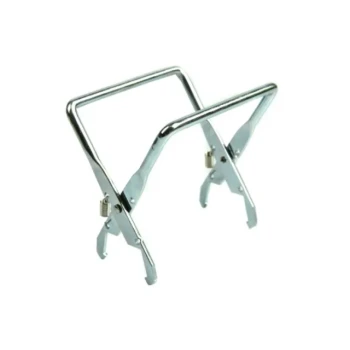Yes, for consistent success, you must coat plastic foundation with beeswax. While some commercially sold plastic foundation comes "pre-waxed," this coating is often too thin for bees to readily accept. Without an adequate layer of wax, bees see the plastic as a foreign obstacle and will often build irregular, inefficient comb around it rather than on it, creating major problems for the beekeeper.
The core issue is simple: bees build with wax, not plastic. Applying a heavy wax coating to plastic foundation bridges this gap, tricking the bees into treating the durable plastic frame as a natural, workable surface. This combines the structural integrity of plastic with the biological appeal of beeswax.

Why Bees Reject Bare Plastic
Bees are driven by millions of years of instinct. A smooth, scentless sheet of plastic violates the fundamental principles they use to build their home.
The Problem of Scent and Texture
Bees use pheromones and the texture of existing wax to communicate and organize their complex construction projects. Bare plastic offers no familiar scent cues and its slick surface is not a texture they recognize as a building material.
The Consequence: Burr Comb and Brace Comb
When presented with unwaxed plastic, bees will try to avoid it. They may build comb attached only to the wood parts of the frame, leaving a large gap between their comb and the foundation. This results in burr comb and brace comb—wild, unsupported structures that are difficult to inspect and disastrous to extract honey from.
The Critical Role of a Nectar Flow
Even with a wax coating, acceptance is not guaranteed. Bees are most willing to draw out comb on any foundation, including plastic, during a strong nectar flow or when being consistently fed sugar syrup. When resources are scarce, they are far more reluctant to invest energy in building on a less-preferred surface.
Understanding the Trade-offs: Foundation Choices
Choosing a foundation type involves balancing cost, convenience, and bee biology. There is no single "best" answer, only the best fit for your goals.
Waxed Plastic Foundation
This is the preferred choice for many commercial beekeepers. Its main advantage is durability. Plastic foundation will not sag in high heat or blow out in a honey extractor, and it can be reused for many years. However, its primary weakness is a lower acceptance rate by the bees, which is why a heavy wax coating is not optional, but essential.
Natural Beeswax Foundation
This is the most traditional option. Bees readily accept and build on beeswax foundation because it is their natural material. The downside is that it's fragile. It can break easily during honey extraction and can warp or sag in extremely hot climates if not properly wired into the frame.
Foundationless Frames
This method provides bees with an empty frame, encouraging them to build comb entirely on their own. This is the most natural and cost-effective approach, but it requires the most intensive management. Without foundation as a guide, bees may build cross-comb that connects multiple frames, making hive inspections nearly impossible without destroying the comb.
How to Apply This to Your Project
Your choice of foundation should align directly with your beekeeping philosophy and operational goals.
- If your primary focus is durability and ease of use: Choose commercially-waxed plastic foundation, but be prepared to add an extra layer of melted beeswax yourself if the bees are slow to accept it.
- If your primary focus is maximizing bee acceptance and a natural hive: Use natural beeswax foundation, understanding that you will need to be more careful during honey extraction.
- If your primary focus is creating the most natural comb possible: Use foundationless frames, but only if you are an experienced beekeeper ready to perform frequent inspections to correct comb construction.
Ultimately, working with your bees' natural instincts is the key to a healthy and productive hive.
Summary Table:
| Foundation Type | Key Advantage | Main Disadvantage | Best For |
|---|---|---|---|
| Waxed Plastic | Durability & Reusability | Lower Bee Acceptance | Commercial apiaries prioritizing long-term use |
| Natural Beeswax | High Bee Acceptance | Fragility & Can Sag | Beekeepers favoring natural, high-acceptance comb |
| Foundationless | Most Natural Comb | Requires Intensive Management | Experienced beekeepers focused on natural hives |
Achieve Hive Efficiency with the Right Foundation from HONESTBEE
As a commercial apiary or beekeeping equipment distributor, your success depends on efficient, productive hives. The right foundation is critical. HONESTBEE supplies durable, high-quality beekeeping supplies and equipment through wholesale-focused operations, helping you maximize bee acceptance and honey production.
Let our experts guide you to the best foundation choice for your operational goals. Contact HONESTBEE today for wholesale pricing and expert support.
Visual Guide

Related Products
- Food Grade Plastic bee Foundation for Bee Frames
- Beeswax Foundation Sheets Beehive Foundation for Wholesale
- Wooden Bee Brush with Triple Row Artificial Fiber for Beekeeping
- Double Row Artificial Fiber Bee Brush for Beekeeping
- Professional Frame Preparation: The HONESTBEE Electric Wire Embedder
People Also Ask
- Does plastic foundation affect honey quality or taste? A Practical Guide for Beekeepers
- What is a plastic foundation sheet? A Durable, Reusable Hive Management Solution
- How to get bees to draw out plastic foundation? Boost Comb Building with Proven Tactics
- Why do commercial beekeepers prefer plastic foundation? Durable, Reusable, and Cost-Effective
- How does plastic foundation differ from beeswax foundation? Choose the Best for Your Hive's Success



















